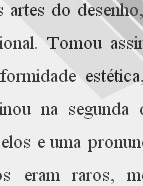

................................
At the end of the century, the history of Portuguese art received the crucial contribution of another foreign author, the German Karl Albrecht Haupt (Büdingen, Hessen, 1856 - Hanover, 1932). An architect, teacher and art historian, with a doctorate in philosophy from the University of Giessen, a professor at the Higher Technical Institute in Hanover, he focused on the study of Renaissance architecture, and published the work Arquitectura da Renascença em Portugal [Renaissance Architecture in Portugal] (1890 and 1895), translated into Portuguese in the journal Serões [Soirées] between 1903 and 1909 which were later published in volume in 1922.
The work of Joaquim de Vasconcelos and many of the afore-mentioned authors remained on the fringes of an increasingly important field: art criticism, that is, the appraisal of contemporary art, particularly present in the journals that multiplied after 1840, namely the general magazines which, while granting little interest to art, contributed to raising the public's awareness of the historical heritage and, occasionally, of painting and sculpture, thanks to historical and descriptive articles, engravings, and dissemination notes. The most important were O Panorama (1837-1844, 1846-47, 1852-58 and 1866-68), "the literary and instructive journal of the Sociedade Propagadora de Conhecimentos Úteis [Society for the Dissemination of Useful Knowledge]", Revista Universal Lisbonense [Universal Lisbon Journal] (1841-1859), Arquivo Pitoresco [Picturesque Archive] (1857-68) and O Ocidente [The West] (1878-1915).
As we approach the end of the century, the journals disseminating art through chronicles, front-page prints, and travel notes multiply, as can be seen in the weekly Branco e Negro [White and Black], in 1896. But art remained very much a side-line issue in literary journals. One of the most significant examples is perhaps the Revista de Portugal [The Journal of Portugal] (1889-1892), directed by Eça de Queirós, where, as noted by José-Augusto França, "in its three thousand pages of text there were only three articles on art”. The specialised press, except for the Jornal de Belas-Artes [Journal of Fine Arts] or Mnémosine Lusitana [Lusitanian Mnemosyne] (1816-17), saw an increase with the publication of the homonymous Jornal de Belas-Artes (1843), directed by Almeida Garrett, which was remarkable for its criticism on painting. The "art journals" did not exclude literature, history or archaeology.
